this is a reminder that traditional agricultural got much that was right in terms of output. The efforts of capital to alter the traditional dynamic was been often seriously wrong and even mischievious.
now we have a really premature promotion of fake meat and crickets no less. We will soon need to massively increase our cattle herds to properly apply regenerative agriculture. The alternative happens to be desertification.
eliminating global poverty will also intensify all of our agricultural lands as well. As posted long since, the human population needs to reach 100 billion in order to properly terraform terra with sustainable agriculture.
The War Against an Underrated yet Essential Food in Our Diet
BY MARINA ZHANG
AUGUST 26, 2022
Rendered animal fats like lard, tallow, and schmaltz have been kitchen staples for centuries.
https://www.theepochtimes.com/the-war-against-an-underrated-yet-essential-food-in-our-diet_4683898.html?
Nutrition is a field of contradictions and changing fads. In recent decades, most schools and teachers encourage a diet high in grains and vegetables, moderate protein, and low fats and oils. Over the years, paleo, keto, vegan, and various diets that contradict each other have come and gone.
However, amidst it all, is an important food source that has been severely underrated, and even outright disapproved of.
The Underrated Importance of Animal Fat
Sally Fallon, nutrition researcher, author, and founder of the Weston A. Price Foundation (WAPF), told The Epoch Times that animal fat is the most important part of the diet.
“Animal fats are essential for life; they were the most highly valued part of the diet of traditional cultures,” said Fallon.
The WAPF is based on the works of a renowned dentist named Dr. Weston A. Price. Price roamed the continents and studied the diet of many indigenous populations, of which he identified 14 to be the healthiest based on their teeth and bone health.
“They had virtually no cavities, good bone structure meaning that their diet was good from conception, and they had no crowded teeth … beautiful, broad smiles,” said Fallon.
Though these 14 groups all ate vastly different diets, all consumed a mixed diet of animal foods, dairy, grains, vegetables, and fruits. Fallon highlighted that a major part of their diet was meat in the form of animal organs and animal fat.
“All of these groups ate animal foods, and went to a lot of trouble and risks to obtain the animal foods.”
“If they killed an animal and it was too lean. They just threw it away; it was considered rubbish. When they did kill an animal and it was okay [in fat content], the first thing they ate were the brain, the tongue, the marrow, and the liver. Those are the most nutrient-dense parts of the animal. And then what they did was cut up the lean meat and strips and dry it or smoke it and they rendered all the fat and when they ate the lean meat, they spread it with the fat. They never ate lean meat.”
However, Western health education and guidelines have severely suppressed the importance of animal fats and organs, making “Americans afraid of animal fats,” said Fallon.
Animal fats are high in saturated fats. Previously biased studies postulated that saturated fat increased blood cholesterol and the risk of cardiovascular disease, instilling fear in the food.
This bias primarily came from a study Ancel Keys published in the 1940s that showed a direct correlation between saturated fat intake and cardiovascular disease.
The study compared data from various countries and found that the percentage of caloric saturated fat intake was correlated with a higher rate of cardiovascular events.
However, it was later found that Keys measured 22 countries, and only cherry-picked the numbers that gave him a correlation. If data from all the countries were considered, then there would be no correlation.
[ By the way, this is how you do scientific fraud - arclein ]
Nonetheless, even now, saturated fats are still believed to be linked with increased risk of cardiovascular disease while health guidelines continue to recommend polyunsaturated fats such as vegetable oils as the prime source of lipids.
Yet, a 2013 study on over 450 men found that men who replaced saturated fats with polyunsaturated fats, had an increased mortality rate of coronary heart disease, cardiovascular disease, as well as all-cause mortality.
Another 2013 study replaced saturated fat with vegetable polyunsaturated fat. The study found that though the switch reduced blood cholesterol, this did not translate to reduced coronary heart diseases.
Further research has shown that saturated fats do not clog arteries or cause heart disease. In fact, saturated fat in the diet reduces lipoprotein(a), a risk factor for atherosclerosis, strokes, and coronary heart disease.
The Benefits of Saturated Animal Fat
WAPF’s researchers reasoned that human bodies are warm-blooded—as with the beef, pork, lamb, and poultry we consume—this makes animal fat more compatible in our diet.
The fats and oils we consume have many uses in our bodies, all of the cells in our bodies are lined by lipids from the fats and oils. Different fats or oils can therefore introduce very different characteristics.
Saturated and trans fats are solid (fat) at room temperature. This is because the fat molecules are straight long chains, allowing each molecule to pack closely, giving them higher melting temperatures.
Polyunsaturated fats are usually liquid (oil) at room temperature. They have double (unsaturated) bonds that add curvature and twists in their chains, this prevents molecules from stacking closely against each other, giving polyunsaturated fats lower melting temperatures.
The straight chains of saturated fats give the linings of cells stiffness when incorporated. They will “provide the appropriate stiffness and structure to our cell membranes and tissues,” according to the WAPF dietary guidelines.
On the other hand, polyunsaturated fats cannot pack as closely, and though we also need them on our cells, too much of them lining our cells will make our cells fluid and “floppy.”
Trans fats are an interesting case: they add stiffness to the cell membranes, but high presence of trans fats is also associated with inflammation and cell death. It is therefore recommended to consume low amounts of trans fats.
Though some animals also contain low amounts of trans fats, most of the trans fats in our diet are from artificially hydrogenated polyunsaturated fats.
Animal fats are also highly nutritious.
Tallow from beef provides an alternative to fish as a safer source of omega-3 fatty acids and is also low in omega-6 fatty acids, which is known to contribute to inflammation. Raw milk is a great source of calcium, vitamin A, D, K, iron, zinc, protein, and omega-3 fatty acids.
“Why is the fattiest steak the most expensive?” Dr. Robert Kiltz, a renowned fertility doctor asked. “That’s because it is the most nutrient-dense.”
Dr. Robert Kiltz in the laboratory (courtesy of Kiltz).
However, the quality of the meat and fat varies depending on the diet and treatment given to animals.
Fallon encourages consumption of pasture-fed animals; grass-fed cows live a healthier lifestyle and studies show that these meats are more dense in nutrients as compared to grain-fed cows.
Certain organs from animals are also highly prized; the skin of chicken, the livers of chicken, beef, and lamb are all highly nutritious foods.
Animal livers are rich in essential amino acids, which form our proteins and muscles. They are also rich in vitamins such as vitamin A, B, iron, and various other minerals.
However, it should be noted that this only applies for organic, and pasture-fed animals not exposed to antibiotics and hormones. Since the liver is a place that processes toxins, animals recently exposed to contaminants before slaughter are likely to still contain the toxins in the meat.
WAPF recommends that protein should make up 10 to 20 percent of the diet, and that 80 to 90 percent of the diet should be split between fats and carbohydrates, with a greater proportion of fats as opposed to carbohydrates.
Kiltz, a fertility doctor who practices a keto carnivorous diet, recommends a diet high in fats, moderate proteins, and low carbohydrates. He argues that humans can survive fully on meat, provided they eat nutritious organs.
What happens is the Standard American Diet can cause gut dysbiosis, meaning a disruption in our gut microbiome, which can lead to intestinal inflammation and a leaky intestinal barrier. (ShutterStock)
Common Diet Mistakes Hurt the Gut
Both Kiltz and Fallon’s recommendations run contradictory to the current nutrition and health guidelines that recommend a diet high in grains and vegetables, moderate meat and fish, low oils and fats are not recommended.
Even though the food pyramid has been long debunked as flawed, it remains in the current nutrition education today and as part of the Western diet. Most nutritionists and dietitians still recommend a diet high in carbohydrates with 45 to 65 percent of calories from carbohydrates, 25 to 35 from fats, and 10 to 30 percent from protein.
“The new guidelines imply that everyone can eat the same foods in the same proportions and be healthy … grains should be the basis of our diet, but many people do very poorly on grains,” said Fallon.
She said that Price’s research shows that vegetables and fruits are important in a person’s diet, but many people are preparing their carbohydrates wrong, and this can expose them to a myriad of health problems.
The chronic condition of irritable bowel syndrome (IBS) has also received increased attention as the most common gastrointestinal disorder. Though it only affects 10 to 15 percent of the U.S. population, around 22.5 to 35.5 percent of teenagers are affected.
Kiltz and Fallon both speculate grain and vegetables to be contributors to IBS. WAPF recommend a bone broth to heal the gut, and recommendations from health experts to reduce fermenting fiber suggest that carbohydrates may be involved.
Fallon said that the biggest mistakes in food preparation involve grains and raw vegetables.
Grains need to be soaked and fermented to allow some of the tougher carbohydrates to break down.
Fallon cited a 2011 study that found wheat that has been well-fermented and made into sourdough could be safely consumed by people with coeliac disease.
“Starting in the 70s when people were supposed to eat all these rough grains and whole wheat muffins and granola and stuff like that, we started to see the advent of these terrible digestive problems, and now a lot of people can’t eat grains.”
Kiltz said that vegetables, especially raw ones, contain high amounts of chemicals that prevent digestion and have to be cooked to break them down to simpler sugars.
Humans, unlike cows, do not have the four stomachs and the microbiome to break down raw vegetables and fibrous grains.
Much of these carbohydrates are indigestible fiber, and when eaten in excess, can cause damage to the gut, digestive distress, bloating, constipation, as well as malnutrition.
Focusing on vegetables and fruits alone, raw vegetables have been praised for their ability to chelate heavy metals. However, many raw vegetables also contain anti-nutrients that prevent the absorption of various minerals, and can cause malnutrition if eaten in excess.
Cruciferous plants such as kale, Brussel sprouts, broccoli, and others, contain glucosinolates and goitrogens. These chemicals reduce the absorption of iodine, which can be resolved by boiling the vegetables.
Raw potatoes and legumes, such as soybeans, peanuts, as well as grains, contain harmful lectins and can prevent absorption of carbohydrates if they are not cooked.
The lectins in certain legumes can bind to the gut wall and cause vomiting, diarrhea, as well as blood clotting. Boiling these foods until they are cooked can reduce lectins to negligible amounts.
Further, oxalates, common to leafy greens, can prevent calcium absorption, cause inflammation, and also increase risk of kidney stones. Similar to the other anti-nutrients, wet cooking reduces oxalate content
Beyond Meat “Beyond Burger” patties made from plant-based substitutes for meat products sit alongside various packages of ground beef for sale in New York City on Nov. 15, 2019. (Angela Weiss/Getty Images)
Climate Change and the Ethics of Eating Meat
Eating meat has also been maligned in recent years for a new reason: climate change. In light of this, the discussion of eating meat has gradually become a question of ethics rather than a discussion around health. The concern that meat is unsustainable for the environment has contributed to people turning vegetarian and vegan.
According to the United Nations, beef generates 70.6 kilograms of greenhouse gases per kilogram of food, but vegetables generate 0.7 kilograms.
These statements have encouraged more people to become vegans, reasoning that the vegan diet is the most sustainable, ethical and cruelty-free.
Both Fallon and Kiltz find this concerning from a nutritional perspective.
Going on this diet in the long-term will require the addition of nutritional supplements to prevent deficiencies and malnutrition. Vegan diets definitely need to be supplemented with vitamin B12 and omega-3 fatty acids. To compensate for low protein intake, many vegans also need to specifically seek out vegan foods which are often marketed at a higher price.
Nonetheless, the agenda against eating meat and raising livestock has persisted.
The United States Environmental Protection Agency (EPA) wrote that livestock and other agricultural activities produce 37 percent of methane emissions. Methane makes up around 10 percent of greenhouse gas emissions, but as it is 30 times more insulative of heat than carbon dioxide, activities that produce methane, including cattle farming, have been severely criticized.
Reports are emerging from the Netherlands, where farmers are forced to slash their cattle numbers as their lands are too close to lands protected for their habitat.
Under these regulations, Martin Neppelenbroek, a dairy farmer, is forced to slash 95 percent of his cattle numbers.
Dutch dairy farmer Martin Neppelenbroek at his farm in Lemelerveld, The Netherlands, on July 7, 2022. (The Epoch Times)
“I can’t run a farm on 5 percent. For me, it’s over and done with,” he said in a July 7 interview with The Epoch Times.
Neppelenbroek said he may have to sell his land; however, no one else seems to want to buy it but the government.
(William Edge/Shutterstock)
Regenerative Agriculture: A Potential Solution
Some have suggested regenerative agriculture as a practice to reduce carbon emissions while producing more nutritious and ethical goods. Regenerative meat products are already entering the shelves.
Regenerative meat is generally produced by farmers who practice rotational grazing, a popular form of regenerative agriculture.
Cattle and other livestock gradually move through the pasture, grazing on different plots of land over time, rather than grazing in a fixed area.
The practice also resolves the problem with the methane by using it as natural fertilizer. Livestock produce methane as part of their digestive process. Decomposing manure generates both methane and nitrous oxide. However, the pasture the livestock graze on can store and use these gasses as fertilizers, producing more fertile land, while reducing carbon emissions.
Grass-fed livestock also provide more nutritious meat than grain-fed meat, common to industrialized meat and poultry.
The opposite of rotational grazing would be leaving livestock to graze continuously on the same pasture. This can lead infertile and damaged land as animals eat the grass down to the ground. This disturbs the topsoil, the carbon stores and can lead to erosion.
Though advocates for regenerative agriculture argue that this practice is viable for the future, nonetheless, the politically driven agenda and the pandemic has resulted in significant decline in the livestock industry. Since the 1980s, cattle numbers have been in a state of steady decline.
To the Future: Synthetic Meat and Industrialized Bugs?
Now there is talk of synthetic meat cultured in laboratories and backed by Big Tech. Bill Gates, Richard Branson, and other business leaders, have invested in synthetic meat laboratories.
Gates also said in a 2021 interview that he wants “all rich countries” to switch to 100 percent synthetic meat but not the poor countries. He has since bought 242,000 acres of farmland. A report released in January 2021 found Gates as the biggest farmland owner in the United States.
Despite the media and Gate’s promotion of synthetic meat, this practice is in reality highly questionable in its sustainability and nutritional value. Though promising a reduced carbon footprint, studies (pdf) have found that the bioreactors used to produce meat will generate carbon dioxide that far exceeds what is generated by livestock over the long term.
Further, without the animal skin to protect the meat, lab-made meat can easily get contaminated with viruses and bacteria and is likely to be sterilized with antibiotics. Culturing meat may also require the use of animal sex hormones which have been banned since the 1980s, and there are currently no guidelines or legislation on how these can be used in laboratory meat.
The poorer palate of artificial meat is another problem.
However, a major concern is that there is yet a technology that can promise synthesized meat will have the same nutritional content and value as natural meat. Consumers may be setting themselves up for malnutrition if they switch to a diet in synthetic meat.
Entomo Farms, the largest cricket farm in North America, produces cricket flour, cricket powder, and insect protein. The startup Exo uses Entomo’s cricket powder to produce high-protein, low-sugar energy bars, which come in five different flavors.
Bugs: Bon Appetit
In recent years, nutritionists and health experts have raised the possibility of eating bugs in the future as a replacement for “unsustainable” meat protein.
Media sources promoting entomophagy often claim that insects, such as crickets, provide a higher amount of protein than meat.
This argument is false. Crickets provide around 13.2 to 20.3 grams of protein per 100 grams which is significantly lower than chicken and beef which provides 31 grams and 26 grams, respectively.
Given that crickets are significantly less dense in protein than beef and chicken, for an average person to meet their daily protein intake, they would need to consume a significantly greater volume and mass of crickets than if they were consuming meat.
Nonetheless, the push for greater social acceptance of entomophagy has persisted.
Celebrities such as Angelina Jolie, Nicole Kidman, Justin Timberlake, Zac Efron, and many others have disclosed to the public their entomophagy experiences.
“Crickets, you start with crickets. Crickets and a beer and then you kind of move up to tarantulas,” said Jolie during a 2017 BBC interview.
Further, influencers have been sponsored to review edible bugs on their videos. Stalls are also set up giving the public an opportunity to try cricket cakes, and various other insect “delicacies.”
However, this is nowhere enough to convince an average person to make the switch from meat to insects.
Advocates for entomophagy often use the claim that more than 2 billion in the world are insect-eaters to argue that the remainder of around 6 billion people can also be persuaded.
This statement has been heavily contested as studies have shown that this claim was not based on actual statistics.
A select group of bugs are eaten in several countries in Asia and Africa. Research has shown that only some people eat them, and it is most definitely not a staple, nor a frequent snack.
To combat public “resistance” to eating insects, some researchers suggest grinding insects such as crickets into flour, and disguising it in processed food to evade repulsion.
However, given that many Western and developing countries are already facing a public health crisis from processed foods, replacing meat completely with bug flour is likely to further exacerbate the global health problem.
Further, a major proportion of insects is a polysaccharide carbohydrate called chitin, similar to many dietary fibers, chitin is another carbohydrate humans cannot break down.
That is only the minor issue: research on cancer has shown that chitin acts as a “dual-edged sword” in cancer and may actually be a carcinogen.
While some studies found chitin to carry anti-cancer properties, other studies found chitin to be pro-inflammatory and drives cancer propagation.
Finally, the future of bugs as a food source would also require a shift in how we source our insects. Rather than catching them from the wild, having bugs serve as major components of our food source will require a industrialized system where bugs are mass produced in factories.
Already in France, a factory was erected in 2020 to industrialize bugs. The Bill & Melinda Gates Foundation also funded All Things Bugs in 2012 to produce bug-based food.
YouTuber Kiana Docherty raised the concern that industrialized bugs for food may lead to a monopoly in the food industry.
Since a food industry based on bugs will require specialized technology and infrastructure to mass-produce insects for food consumption, this technology is likely to exclude small businesses and farmers, running completely contrary to the livestock industry where everyone is able to raise and grow their own food, provided they have the space.

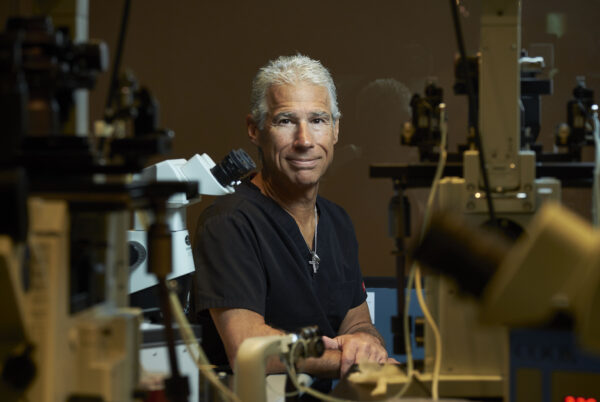
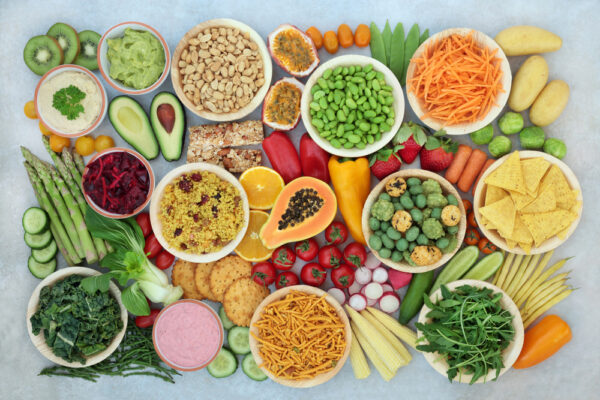
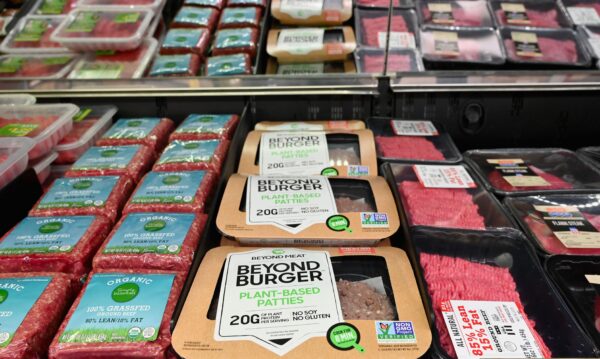
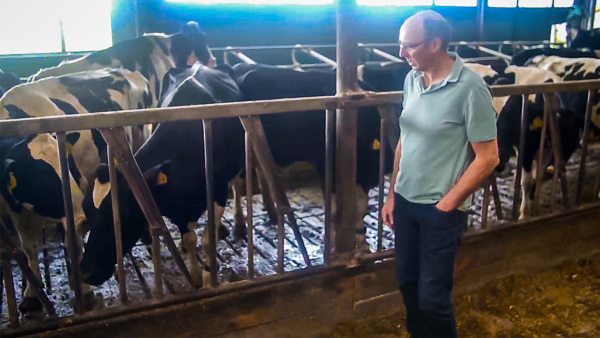
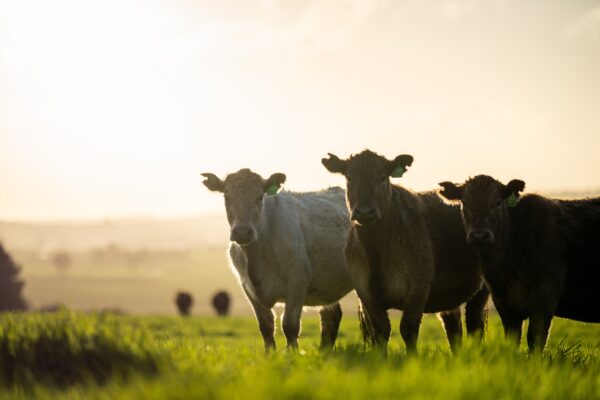
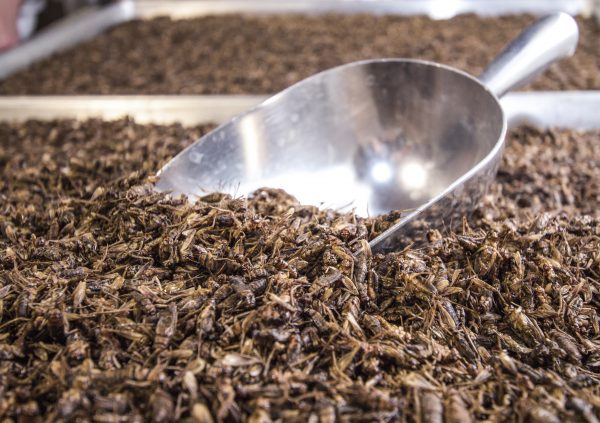
No comments:
Post a Comment